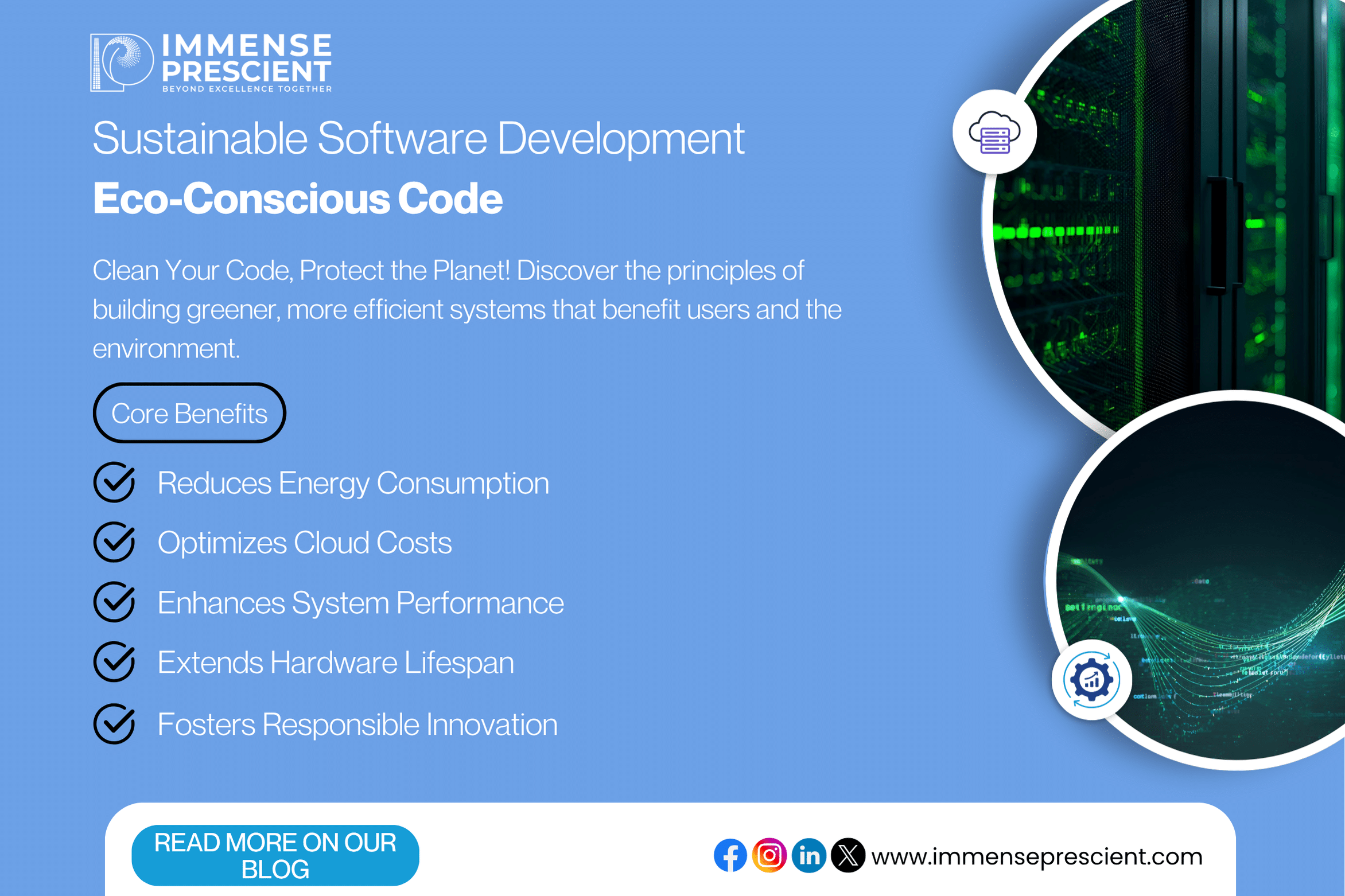Sustainable Software Development: Building Greener, More Efficient Systems
Introduction: Sustainable Software Development
In today’s digital-first world, software powers everything from mobile apps and enterprise platforms to global cloud systems. But with this rapid growth comes a hidden cost: energy consumption and carbon emissions. According to a study by The Shift Project, the digital sector accounts for nearly 4% of global greenhouse gas emissions, and this figure is rising.
This makes sustainable software development not just a trend, but a necessity. By designing and building greener, more efficient systems, organisations can reduce environmental impact, cut operational costs, and future-proof their technology.
What is Sustainable Software Development?
Sustainable software development is the practice of creating software solutions with an emphasis on:
- Energy efficiency – minimising CPU, memory, and storage use.
- Carbon awareness – choosing greener hosting and cloud services.
- Lifecycle impact reduction – building systems that require fewer resources over time.
- User-centric sustainability – designing apps and systems that encourage responsible usage.
This approach goes beyond coding; it’s about embedding sustainability into every phase of the software lifecycle.
Key Principles of Building Greener Systems
- Optimize Code for Efficiency
Clean, well-structured, and optimised code runs faster and consumes less energy. Eliminating unnecessary computations reduces power usage. - Leverage Green Cloud Providers
Major players like Google Cloud, Microsoft Azure, and AWS offer carbon-neutral or renewable-powered hosting options. - Use Energy-Efficient Architectures
- Adopt microservices and serverless computing for on-demand scaling.
- Implement caching to minimise redundant computations.
- Measure and Monitor Carbon Footprints
Tools such as Cloud Carbon Footprint help organisations track emissions from cloud usage. - Promote Circular IT Practices
Encourage the reuse of hardware, reduce dependency on energy-hungry legacy systems, and design software that runs efficiently even on older devices.
Benefits of Sustainable Software Development
- 🌱 Environmental Impact Reduction – Lower energy usage and fewer emissions.
- 💰 Cost Savings – Efficient systems reduce cloud and infrastructure costs.
- ⚡ Performance Gains – Optimised code improves speed and user experience.
- 🌐 Brand Reputation – Eco-conscious practices strengthen trust and attract sustainability-minded customers.
Sustainable Software in Action
Forward-thinking companies are already adopting green coding practices. For instance, Microsoft has committed to becoming carbon-negative by 2030, partly by embedding sustainability into its software and cloud services. Similarly, startups are focusing on Green IT solutions to differentiate themselves in competitive markets.
At Immense Prescient, we believe that sustainability is a core pillar of digital transformation. By aligning with eco-friendly practices, businesses not only reduce their carbon footprint but also unlock innovation and efficiency.
Conclusion: Coding a Greener Future
Sustainable software development isn’t just about efficiency; it’s about responsibility. Every line of code, every architectural choice, and every deployment decision can bring us closer to a more sustainable digital future.




